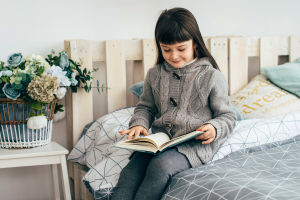There’s something about a quiet afternoon with vintage teacups and old books that makes the world feel softer. Sunlight streams in through the window, highlighting the delicate china and the worn pages, creating a scene that feels both timeless and inviting.
Just looking at the stack of teacups resting on books can make us slow down, take a deep breath, and enjoy a small, peaceful moment. Let’s dive into how this simple arrangement can turn an ordinary day into something quietly extraordinary.
The Charm of Vintage Teacups
Vintage teacups carry subtle stories in their patterns, shapes, and tiny imperfections. Some are lined with faint gold edges, others are painted with delicate flowers or abstract motifs, and a few star light stains from decades of loving use. We can almost feel the hands that once held them, the quiet conversations shared over steaming tea.
Each cup is a miniature piece of art, and together they create a sense of elegance and nostalgia that feels timeless. There’s a joy in discovering a cup with a slightly uneven rim or a soft pastel pattern—it’s a reminder that beauty often lies in imperfection.
Choosing the Perfect Books
Old books have a texture, weight, and scent that modern pages rarely capture. Their covers are worn, the corners bent slightly from years of handling, and each page carries whispers of past readers’ thoughts. When we select books to stack our teacups on, we consider not only stability but harmony: hardcover editions provide a sturdy base, while softcover books add a casual, whimsical feel.
Sometimes we choose books with gilded lettering or embossed designs to complement the teacup patterns, creating a small visual story. This pairing of tea and literature invites us to pause, reflect, and feel a connection to history and creativity.
Stacking With Intention
Stacking teacups on books is more than arranging objects—it’s a mindful ritual. We usually place the largest cup at the bottom, then smaller ones on top, thinking about balance and symmetry. At times, we mix in a small hardcover book of poetry or a journal, alternating colors and textures to keep the arrangement visually interesting.
Adding tiny touches, like a pressed flower on the top cup or a ribbon marking a beloved page, can turn the display into a personal art piece. Each choice reflects our mood and attention, and the final stack becomes a miniature world of calm and aesthetic pleasure.
Noticing the Details
As we adjust the stack, we notice small, delightful details that make the moment special. The sunlight catching the rim of a cup, the faint scent of aged paper mingling with hints of tea, the soft clink of ceramic as cups shift slightly—these little moments invite presence.
Lykkers, we often overlook such subtleties in everyday life, but in this setup, they become the main attraction. Even a tiny chip on a cup or a folded corner of a page adds character, reminding us that imperfection can be beautiful and meaningful.
Tea and Tranquility
Once the display is ready, we might pour a warm cup of tea into the topmost cup, letting its aroma drift upward. The warmth in our hands, the layered scene of teacups and books, and the gentle glow of afternoon light together create a sense of calm that’s hard to find elsewhere. This is more than decoration—it’s a sensory experience.
We sip slowly, breathing in the fragrances, feeling the textures, and letting our minds wander. This simple ritual teaches us patience, presence, and appreciation, and reminds us that quiet joy often comes in small, everyday gestures.
Adding Personal Touches
We can enhance our little scene with subtle personal touches. A small sprig of dried flowers, a hand-written note tucked between book pages, or a delicate coaster beneath the cups adds personality. Sometimes, we stack a cup upside down to showcase its pattern, or slightly angle a book to create movement in the display.
These thoughtful adjustments not only make the arrangement visually appealing but also allow us to engage creatively, turning a simple corner into a personal sanctuary that reflects our tastes and mood.
Our Afternoon Inspiration
Lykkers, stacking vintage teacups on old books is more than a visual pleasure—it’s a way to connect with history, aesthetics, and our own inner calm. Each cup and each book carries a story, and together they create a scene that invites reflection, creativity, and a slower pace. By taking the time to notice details, add personal touches, and savor a cup of tea, we transform an ordinary afternoon into something memorable and restorative.
Let’s embrace these small rituals and let simple beauty in our surroundings remind us that peaceful moments can be found anywhere, as long as we make space to notice them.


